There is no arguing that pepper spray is one of the very best less lethal defensive implements you can get. Pepper spray is perfect for stopping fights before they start or giving yourself an edge over your attacker if a fight is unavoidable, but you should know the pepper spray laws in your state before using it.
Best of all, it gives you a little bit of range so you don’t have to go hands-on and it is extremely unlikely to cause permanent harm or death.
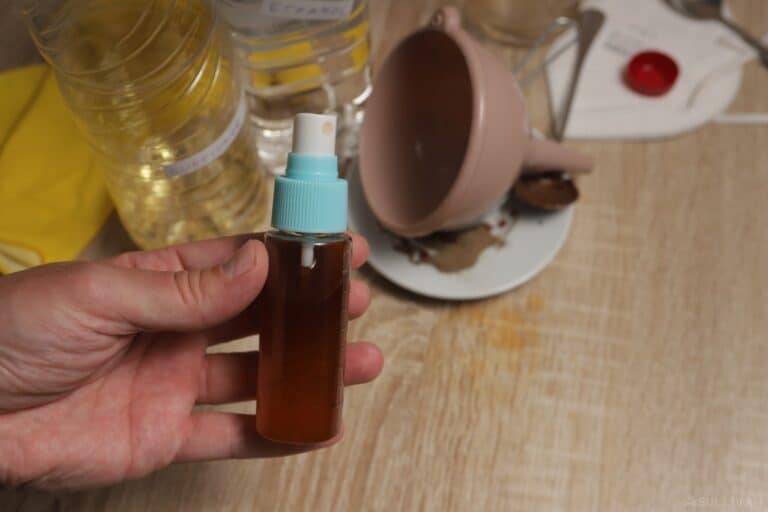
But pepper spray comes from factories, and that means in a grid-down survival situation or anytime you are truly on your own, it won’t be an option if you’re out of the hot stuff. Or will it?
It is actually possible to make your own surprisingly effective DIY pepper spray with the right materials, careful procedure and a strict attention to detail.
Pepper spray at the end of the day is pretty simple stuff. It is highly concentrated oleoresin capsicum, or OC, which is the same stuff that makes hot peppers hot, some type of liquid that suspends the OC, and an emulsifier for some formulations.
The commercial stuff is kept inside a pressurized container that will dispense a fog or stream of the hateful stuff at the push of a button.
It sounds like a lot to handle, but it is possible to make a decent version yourself with common materials and tools.
Read over the list of tools and materials below to familiarize yourself with what you’ll need.
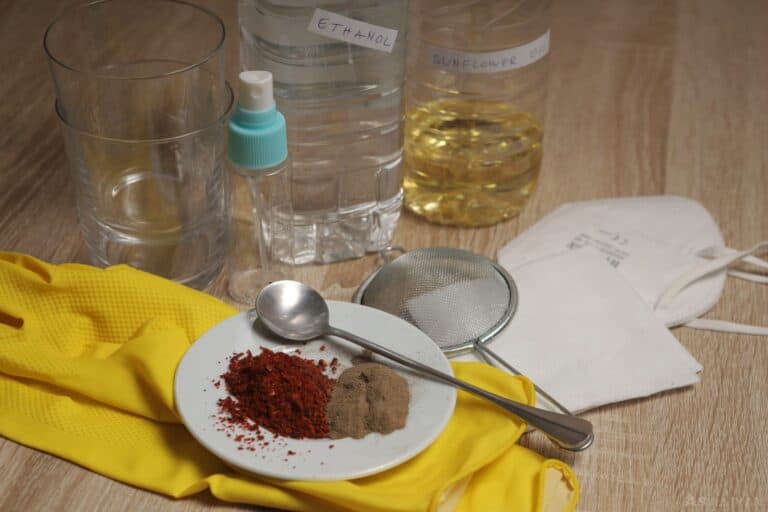
My pepper spray ingredients: cayenne and black pepper powder, spoon, metal strainer, cheesecloth, ethanol, sunflower oil, gloves, two glasses, and respirator mask.
Materials
1. Spicy Peppers
If you have nothing else but you can’t get your hands on some seriously hot chili peppers, you’ll be well on your way to making DIY pepper spray.
As a rule of thumb, the hotter the better. Habaneros are better than jalapenos, and those wickedly hot hybrids like the Madruga Scorpion or Carolina Reaper are even better.
If you’re starting out with fresh peppers, be prepared to put in some time to process them and dry them out.
2. Ground Pepper Powder
A far more convenient option for most people compared to starting with fresh peppers is just starting with some ground pepper powder.
If you are raiding the spice rack at your local grocery store, or rummaging through your own pantry, the hottest thing you’re going to find is cayenne.
Cayenne peppers can be pretty spicy, sure, but there are nowhere near spicy enough to make some truly ferocious pepper spray that will deter a motivated attacker.
Work with what you can get, but try to get the hottest stuff that you can.
3. Ethanol
Ethanol, common alcohol, is the organic solvent we will use to extract the oleoresin capsicum from our dried, ground pepper powder.
90% plus isopropyl alcohol is a good one, but if all you have is some seriously strong liquor, you can use that in a pinch.
4. Oil
You will generally rely on some kind of oil to act as the carrier or suspension for your OC once it is produced. Generally thinner oil that is easier to spray is best.
Common vegetable oil works okay, but so can baby oil. Try not to use anything that is really thick and saucy as this will be less effective and make the pepper spray less likely to penetrate.
Also, keep in mind that oil can be flammable, as many police departments that have tazed oil-based pepper spray victims will attest.
Tools
The materials are only one part of the equation. You’ll need the right tools if you want to make your own DIY pepper spray.
1. Glass Jar x2
A pair of medium sized glass jars or similar non-reactive containers.
2. Strainer
A common wire mesh kitchen strainer or equivalent.
3. Coffee Filters / Cheesecloth
Coffee filters or cheesecloth will help you to strain out the fine particulates left in your mixture that can clog your sprayer.
4. Sprayer
Your pepper spray isn’t going to do much good if you can’t spray it. Your sprayer can be something as simple as a common squirt bottle, a water gun, a garden sprayer or even a rechargeable, propellant-powered canister. Whatever it is, it needs reach and it needs to be easy to actuate when you need it.
5. Gloves
Proper PPE is mandatory for the following procedures. The solution you are handling will hurt you if you get it on you. Wear chemically resistant gloves.
6. Respirator
This one should be obvious. At the very minimum, wear a respirator to keep fumes and particulates out of your lungs. I highly recommend a full gas mask for maximum protection, though.
7. Goggles
If you are wearing only a respirator, goggles are also a good idea when you are working with your DIY solution.
Making Pepper Spray Step-by-Step
The following steps will craft a DIY batch of pepper spray that packs a punch. Read through the procedure completely so you know what to expect before you get started.
The following assume you’re using vegetable oil and already have the pepper powder(s). recipe variations if you’re using water and/or are starting with actual peppers are at the end.
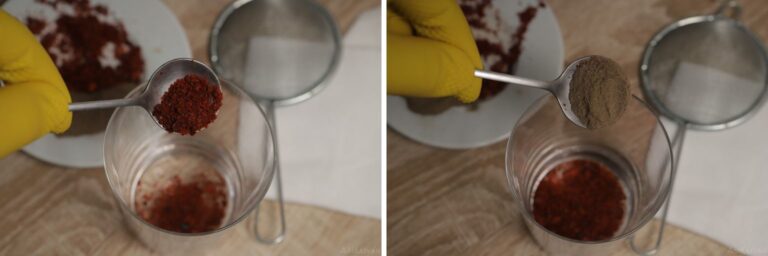
Step 1: Add Your Powders into the First Jar
Place your pepper powder in one of the jars. Pour it in carefully and gently so it doesn’t waft on the air.
If you have several powders, whether store-bought or homemade powder you’ve made yourself, just add them all into the jar.
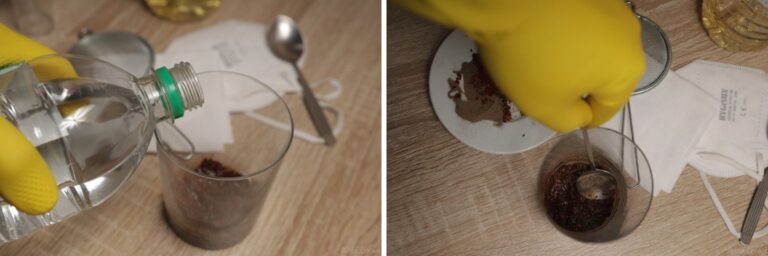
Step 2: Cover with Ethanol
Next, carefully and slowly pour in the ethanol until it completely covers the pepper powder. Stir gently until it’s completely mixed. Don’t pour in too much, just enough to cover the powder.
Step 3: Soak Powder Until Ethanol Evaporates
Leave this solution to soak, uncovered in a well ventilated area, and preferably one with a fume hood. The ethanol will evaporate over time.
Step 4: Repeat Step 2 and 3 until Resin Forms
Once the ethanol level is greatly reduced, pour in more over the clumps of powder, just enough to cover.
If all is going well, you will see thick, lacquer-like globules forming. This is concentrated OC which is what we want for our spray.
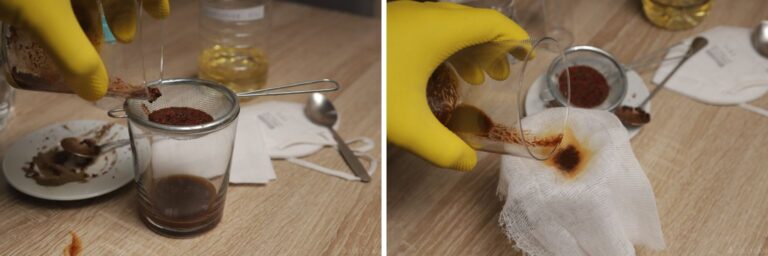
Step 5: Strain Resin
After your next batch of ethanol evaporates or is it nearly fully evaporated, use your strainer and pour the mixture into the clean glass.
Start with a strainer, and then do it once more with a coffee filter or cheesecloth. The collected solution should be free of most particulates.
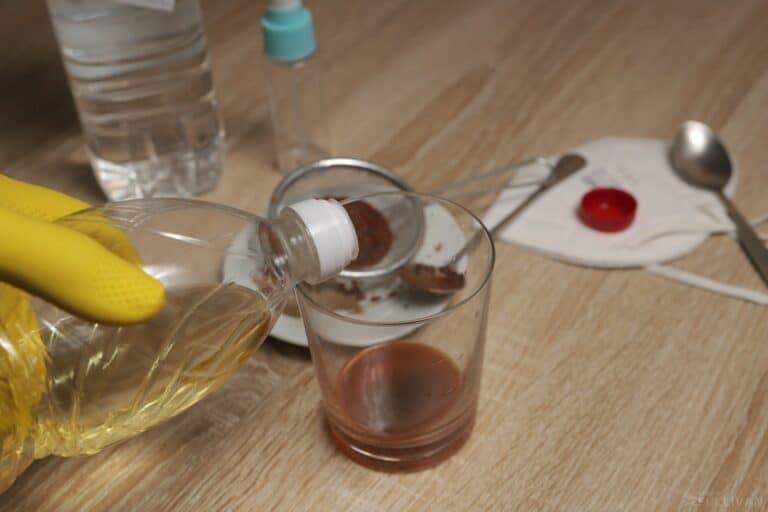
Step 6: Add the Vegetable Oil to the Mix
Next, combine the strained OC with your oil in a 2:1 ratio (OC to Carrier).
For instance, if you are making a small batch of pepper spray and get about four tablespoons of OC, you should add two tablespoons of your solution.
Step 7: Stir
Stir until it is evenly blended. If it is too thick (anything thicker than the consistency chocolate milk), add a little more carrier and stir. If your product is too thick it won’t spray properly.
Step 8: Fill Sprayer with Solution
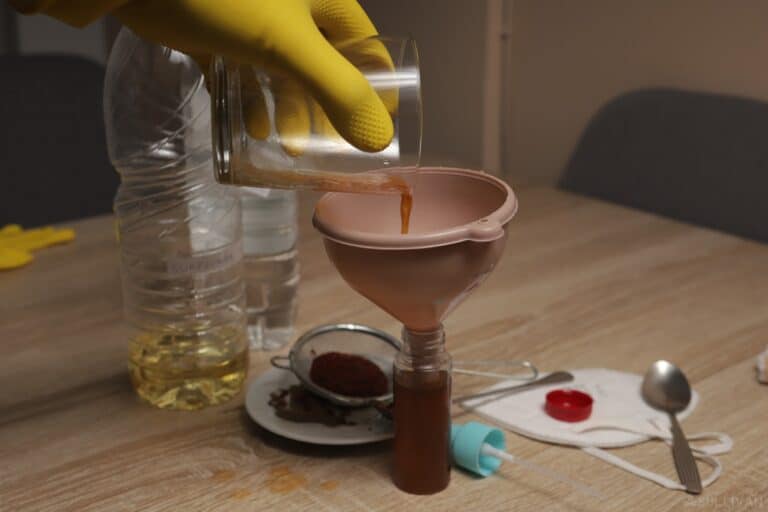
Now, give it one final stir and then carefully, carefully fill your chosen sprayer with the solution.
Water Recipe Variation
If you don’t have or don’t want to use oil, things get a little complicated, but not too much. Additional ingredients you will need:
Extra Ingredients
Water
Water is a suitable carrier for pepper spray, but one that is not as effective as oil. It mandates the use of an emulsifier in the mix, but it has the perk of being much easier to come by, and also not flammable.
Emulsifier
If you are using water instead of oil as your carrier, you’ll need an emulsifier to keep the OC evenly distributed in the solution.
Most major pepper spray manufacturers use propylene glycol, so do try to get your hands on it. It is ideal for the purpose.
Extra Step Between Steps 8 and 9: Add Emulsifier
Add one half part of emulsifier to one part water.
Drying Your Own Peppers Variation
If you’d rather use your own peppers instead of spending money to get them in powder from from the store, do this extra step (we can call it step 0) before you make the homemade pepper spray…
Extra Tools
Food Dehydrator
If you are starting with fresh, raw peppers a food dehydrator will help you dry them out in hours instead of days or weeks. If you’re starting with powder, you don’t need this.
Mortar and Pestle
Again, if you are starting with fresh, whole peppers you’ll eventually need to grind them up into a super fine powder before you process them once they are dried. If you are starting with powder, you don’t need this.
Extra Step 0: Make Pepper Powder (If needed)
If you are starting with whole, fresh peppers, you should at first dry them out in your food dehydrator until they are absolutely dry and crispy.
You can remove the stem of the pepper, but leave the seeds and the membranes. Cut the peppers into quarters to make them easier to handle.
Once they are dry, carefully grind them into as fine a powder as possible with your mortar and pestle and then you are ready to move on to the following steps.
Testing Your DIY Pepper Spray
You’ve got to make sure your sprayer and solution combo works. In an area that does not have a backdraft, test fire to see how your sprayer works and what kind of range you can get out of it.
If you really want to know what you are dealing with, test your sprayer on yourself or on a willing teammate.
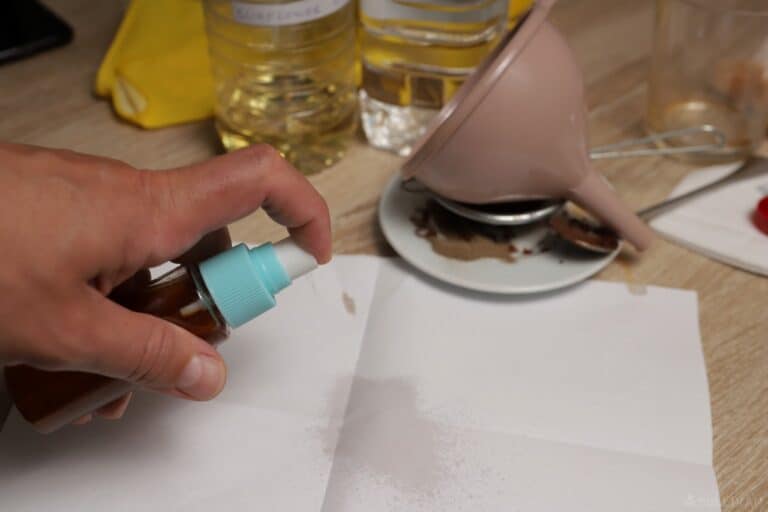
Assuming everything is functional, congratulations: you made your own DIY pepper spray. But remember, your pepper spray is made predominantly from organic materials which will break down and lose potency over time. Fresh is best if you want maximum effectiveness!
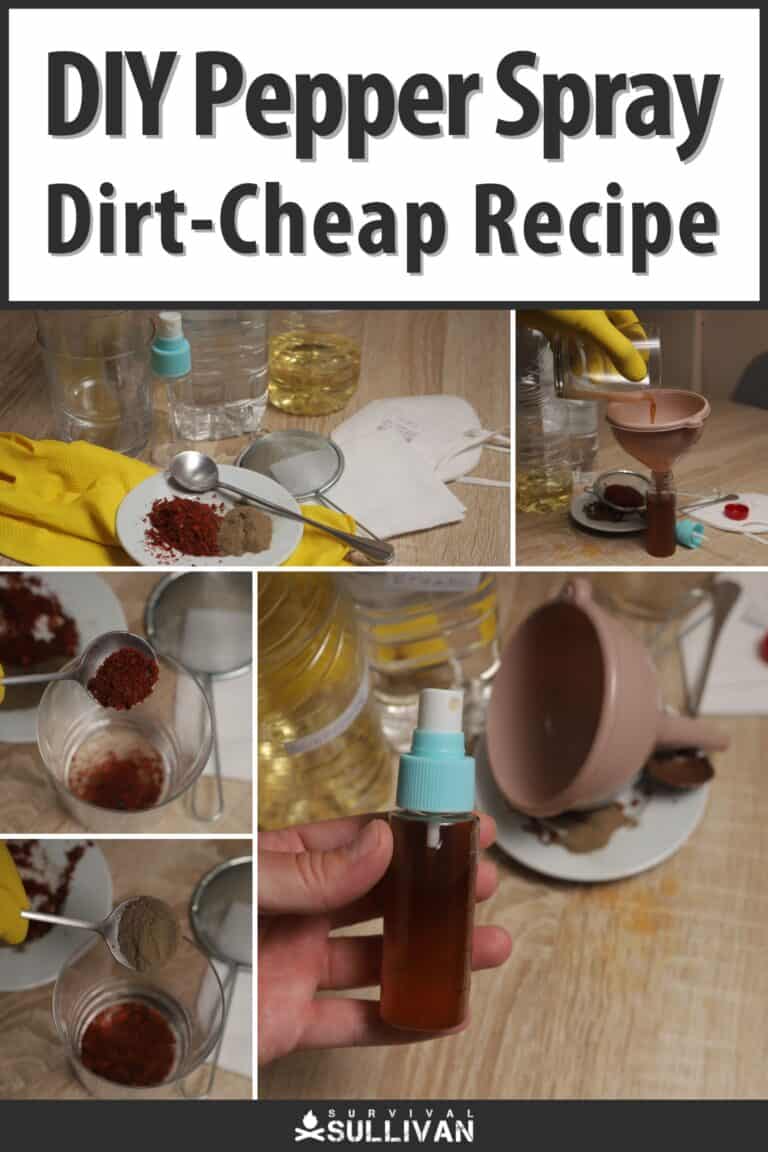
The post DIY Pepper Spray Recipe: Effective and Dirt-Cheap appeared first on Survival Sullivan.
By: Tom Marlowe
Title: DIY Pepper Spray Recipe: Effective and Dirt-Cheap
Sourced From: www.survivalsullivan.com/diy-pepper-spray/
Published Date: Fri, 26 May 2023 16:00:00 +0000
-------------------------------------------------------------------------
 CampingSurvivalistHuntingFishingExploringHikingPrivacy PolicyTerms And Conditions
CampingSurvivalistHuntingFishingExploringHikingPrivacy PolicyTerms And Conditions
